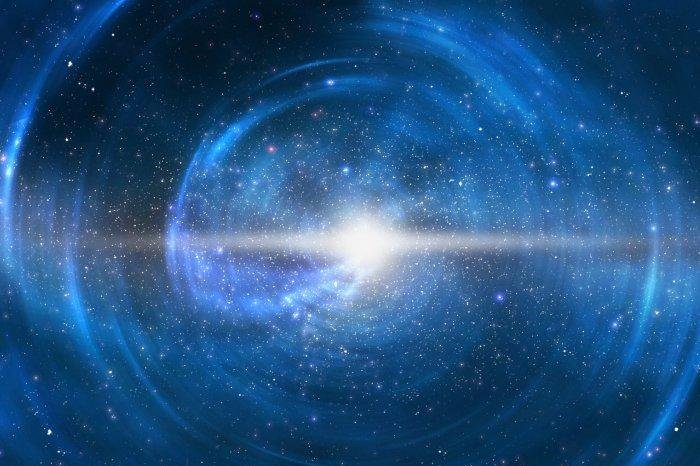A "Big Bounce" -- not a Big Bang -- may explain the origins of the universe. Photo by Imperial College London
LONDON, July 12 (UPI) -- We may be living in a second-generation universe. Scientists say the expanding cosmos may not be born of a virgin explosion. It could be the rebound from a former collapsed universe.
Our existence may have a "Big Bounce" to thank, rather than a Big Bang.
The Big Bounce theory isn't new -- it was first proposed in 1922 -- but cosmologists have struggled to explain how a collapsing universe would end in anything other than complete destruction.
Now, a team of scientists have a working model of "bounced" universe -- and an answer for the question. Quantum mechanics saved the collapsed universe from complete destruction, researchers at Imperial College London say.
The answer is based on the idea that physical laws of the universe were the same on all scales when the cosmos was young and tiny. Quantum mechanics -- the laws that govern subatomic particles -- once ruled all. Quantum mechanics explain why electrons don't lose momentum and crash into the nucleus, destroying the atom.
Quantum mechanics can't explain everything, however. As the universe expanded, a dichotomy was created. A different set of physical laws became apparent -- rules that govern objects at larger scales.
Quantum mechanics, the new model shows, helped turn the collapse of the last universe into the bounce or rebound that created today's.
"Quantum mechanics saves us when things break down," Steffen Gielen, a cosmologist at ICL, said in a news release. "It saves electrons from falling in and destroying atoms, so maybe it could also save the early universe from such violent beginnings and endings as the Big Bang and Big Crunch."
The new model suggests the earliest universe rebounded from a collapsed universe devoid of matter. Instead of matter, there was a lot of radiation. This allowed quantum mechanics to maintain order and encourage re-expansion.
"The big surprise in our work is that we could describe the earliest moments of the hot Big Bang quantum mechanically, under very reasonable and minimal assumptions about the matter present in the universe," added Neil Turok, director of Canada's Perimeter Institute for Theoretical Physics. "Under these assumptions, the Big Bang was a 'bounce,' in which contraction reversed to expansion."
The researchers -- whose latest findings are detailed in the journal Physical Review Letters -- are now working to understand how their model might explain perturbations in the structure of the early universe, like those that yielded the first galaxies.















